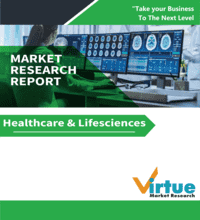Acute Myeloid Leukemia Market Analysis
The Acute Myeloid Leukemia (AML) market focuses on the diagnosis, treatment, and management of AML, a hematologic cancer affecting the blood and bone marrow. AML is characterized by the rapid growth of abnormal white blood cells that crowd out healthy cells, leading to severe complications. The market is driven by advancements in targeted therapies, immunotherapies, and stem cell transplants, which are shaping the treatment landscape.
Disruptive Impact and Opportunities:
The AML market is undergoing significant disruption due to the rapid development of novel therapies targeting specific molecular pathways, enhancing the precision of treatment. Emerging therapies, such as CAR-T cells and targeted inhibitors, offer substantial potential for higher efficacy and fewer side effects compared to traditional chemotherapy. This brings new opportunities for personalized treatment options and more favorable patient outcomes.
Acute Myeloid Leukemia Market Segmentation - Emerging Drugs
-
Omidubicel
-
Uproleselan
-
ALT 803
-
BPX-501
-
JNJ-75276617
-
AB001
Acute Myeloid Leukemia Market Segmentation - Marketed Drugs
-
Gilteritinib fumarate
-
Enasidenib mesylate
-
Ivosidenib
-
Gemtuzumab ozogamicin
Key Companies:
-
Pfizer Inc.
-
Novartis AG
-
Sanofi
-
Bristol Myers Squibb
-
Agios Pharmaceuticals
-
Abbvie
-
Astellas Pharma
Acute Myeloid Leukemia Market Segmentation - By Type
· Chemotherapy-based treatments
-
Cytarabine-based regimens
-
Anthracycline-based regimens
-
Other chemotherapy drugs
· Targeted therapies
-
FLT3 inhibitors
-
IDH inhibitors
-
BCL-2 inhibitors
-
Other targeted therapies
· Immunotherapy
-
Monoclonal antibodies
-
CAR-T cell therapies
-
Bispecific T-cell engagers
· Stem cell and bone marrow transplants
-
Allogeneic stem cell transplant
-
Autologous stem cell transplant
· Other treatments
-
Epigenetic modifiers
-
Other investigational therapies
Acute Myeloid Leukemia Market Segmentation - By Administration Type
-
Oral administration
-
Oral chemotherapy agents
-
Oral targeted therapies
-
Oral immunotherapies
-
-
Parenteral administration
-
Intravenous chemotherapy agents
-
Intravenous immunotherapies
-
Intravenous targeted therapies
-
Stem cell transplant-related administration
-
-
Subcutaneous administration
-
Subcutaneous monoclonal antibodies
-
Subcutaneous bispecific antibodies
-
What’s in It for You?
-
Insight into key drug developments and their market impact.
-
Detailed analysis of growth opportunities in the targeted therapies and immunotherapy segments.
-
Comprehensive understanding of competitive landscape and key players.
-
Identification of emerging drug trends and strategic moves by leading companies.
-
Support in making data-driven decisions for market entry and investment strategies.
Acute Myeloid Leukemia Market Analysis (Market Size & CAGR, Epidemiology, Marketed Therapies, Emerging Drugs, Clinical Trials, Key Approvals & Anticipated Loss of Exclusivity, Opportunities, Unmet Needs, Company Profiles)
1 Acute Myeloid Leukemia Market - Executive Summary
1.1 Introduction
1.2 Objectives
1.3 Key Findings
1.3.1 Market Size 2025 & 2030: By Key Country (10MM)
1.3.2 Global Market Size 2025 & 2030: By Key Segment
1.3.3 Key Investments & Startup Analysis
1.4 Research Methodology
2 Understanding the Disease
2.1 Disease Overview
2.2 Classification
2.3 Signs and Symptoms
2.4 Risk Factors
2.5 Causes
2.6 Disease Biology & Digital Innovations
2.7 Stages & Staging System
2.8 Diagnostic Algorithm
2.9 Current Treatment Practices & Algorithm
2.10 Current Standard of Care and Treatment Gaps
2.11 Patient Demographics and Treatment Pathways
3 Guidelines
4 Unmet Needs
5 Epidemiology and Patient Population
5.1 Epidemiology Key Findings
5.2 Assumptions and Rationale: 10MM
5.3 Epidemiology Scenario: 10MM
5.4 U.S. Epidemiology Scenario
5.5 EU-5 Epidemiology
5.5.1 U.K. Epidemiology Scenario
5.5.2 Germany Epidemiology Scenario
5.5.3 France Epidemiology Scenario
5.5.4 Italy Epidemiology Scenario
5.5.5 Spain Epidemiology Scenario
5.6 Japan Epidemiology Scenario
5.7 China Epidemiology Scenario
5.8 Australia Epidemiology Scenario
5.9 India Epidemiology Scenario
6 Real-world Data & Real-world Evidence
7 Drug Development Landscape
7.1 Existing Key Drug Candidate Profiles/ Marketed Therapies
7.1.1 Gilteritinib Fumarate
7.1.1.1 Product Description
7.1.1.2 Regulatory Milestones
7.1.1.3 Other Developmental Activities
7.1.1.4 Pivotal Clinical Trials
7.1.1.5 Ongoing Current Pipeline Activity
7.1.2 Enasidenib Mesylate
7.1.2.1 Product Description
7.1.2.2 Regulatory Milestones
7.1.2.3 Other Developmental Activities
7.1.2.4 Pivotal Clinical Trials
7.1.2.5 Ongoing Current Pipeline Activity
7.1.3 Ivosidenib
7.1.3.1 Product Description
7.1.3.2 Regulatory Milestones
7.1.3.3 Other Developmental Activities
7.1.3.4 Pivotal Clinical Trials
7.1.3.5 Ongoing Current Pipeline Activity
7.1.4 Gemtuzumab Ozogamicin
7.1.4.1 Product Description
7.1.4.2 Regulatory Milestones
7.1.4.3 Other Developmental Activities
7.1.4.4 Pivotal Clinical Trials
7.1.4.5 Ongoing Current Pipeline Activity
7.2 Competitive Analysis and Differentiation
7.3 Overview of Similar/Competing Drugs in Clinical Trials
7.4 Future Trends and Emerging Drugs
7.4.1 ALT 803
7.4.1.1 Product Description
7.4.1.2 Clinical Development
7.4.1.3 Safety and Efficacy
7.4.2 BPX-501
7.4.2.1 Product Description
7.4.2.2 Clinical Development
7.4.2.3 Safety and Efficacy
7.4.3 JNJ-75276617
7.4.3.1 Product Description
7.4.3.2 Clinical Development
7.4.3.3 Safety and Efficacy
7.4.4 AB001
7.4.4.1 Product Description
7.4.4.2 Clinical Development
7.4.4.3 Safety and Efficacy
8 Regulatory Strategy and Potential Challenges
8.1 Regulatory Pathways in Key Markets
8.2 Anticipated Regulatory Hurdles and Mitigation Strategies
8.3 Case Studies in Oncology Drug Regulation
8.4 Impact of Potential Changes to Regulatory Framework
9 Commercial Landscape
9.1 Market Size & Growth Rates
9.2 Key Approvals & Anticipated Loss of Exclusivity
9.3 PESTLE & Porter’s Five Forces Analysis
9.4 Market Shares, Positioning/Ranking
9.5 Market Drivers
9.6 Identification of Threats
9.7 Digital Evolution in Commercialization
10 Market Segmentation
10.1 Market by Type
10.1.1 Myeloblastic leukemia
10.1.2 Myelomonocytic leukemia
10.1.3 Promyelocytic leukemia
10.1.4 Monocytic leukemia
10.1.5 Other leukemia types
10.2 Market by Therapy Type
10.2.1 Chemotherapy
10.2.2 Targeted therapy
10.2.3 Immunotherapy
10.2.4 Others
11 Pricing, Reimbursement, and Access
11.1 Competitive Pricing Analysis
11.2 Reimbursement Landscape and Challenges
11.3 Strategies for Market Access and Equity
11.4 Patient Spending/Expenditure Analysis
12 Future Trends, Disruptions, and Opportunities
12.1 Analysis of Emerging Trends
12.2 Technological Impact
12.3 Impact of Potential Market Disruptors
12.4 Opportunities for Future Development and Expansion
12.5 Considerations for Investment Opportunities
13 Global Market Dynamics
13.1 Regional Regulatory Disparities
13.2 Cross-Border Partnership Strategies
13.3 Global Supply Chain Dynamics
13.4 Case Studies: Success and Failure in Global Markets
13.5 Strategies for Global Expansion and Localization
14 Company Profiles
14.1 Pfizer Inc.
14.2 Novartis AG
14.3 Sanofi
14.4 Bristol Myers Squibb
14.5 Agios Pharmaceuticals
14.6 Abbvie
14.7 Astellas Pharma
14.8 Daiichi Sankyo Company, Limited
14.9 Otsuka Pharmaceutical Co., Ltd.
14.10 Partner Therapeutics, Inc.
Download Sample
Choose License Type
2500
4250
5250
6900



